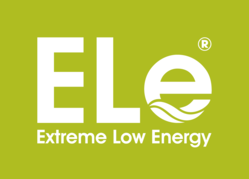Energy Saving Tips for Schools
Energy-efficient schools are a sound financial investment and will help the UK meet its commitment to net-zero greenhouse gas emissions by 2050.
Green schools also have a positive impact on how children learn helping incorporate sustainability into the school curriculum. By becoming eco-conscious, schools can also significantly cut down on their outgoings as well as helping the environment.
Multi award-winning low energy technology firm Extreme Low Energy Ltd is at the forefront of energy innovation providing schools with energy-efficient LED lighting, heating and solar PV power solutions. With the welcome news from the UK government £1 billion Public Sector Decarbonisation Scheme (PSDS) to fund energy reduction projects and Education Secretary Gavin Williamson green light for £560 million for school repairs to make buildings more energy-efficient, there is no better time to make the switch and upgrade.
How can your School become more Energy-Efficient?
There are a number of steps you can take to make your school more energy-efficient, please read our top five tips below:-
1. Switch to LED and Reduce Your Energy Costs
As lighting accounts for around 20 percent of a typical school’s energy costs upgrading to LED lighting is instrumental in helping schools to address environmental issues, saving up to 80 percent of their operating costs. The return on investment of replacing all lighting with LEDs can be as little as two or three years, with the added benefit of reduced maintenance costs because they last longer.
2. Generate Your Own Electricity with Solar PV
Generate your own electricity with energy-efficient Solar PV power solutions. Combining LED lighting with Solar PV will significantly reduce your schools carbon footprint and electricity bills, as every school has the potential to generate its own renewable energy it is a great investment to future-proof your school and modular classrooms.
3. Remember to Power Down
School equipment such as printers, photocopiers and scanners that are used intermittently should either be switched off if not in use or be set to sleep mode. Encourage staff and students to shut down their computers before they leave the room, this can reduce energy consumption by nearly 40 percent.
4. Choose the Correct Settings
Don’t overheat or overcool classrooms. In winter, set your school’s thermostat to 18°C–20°C and in summer set it to 24°C–27°C. This way the thermostat will stop the heating systems from using too much energy.
5. Invest in SMART Meters and Monitor Energy Usage
By investing in SMART meters can help your school control how energy is used, a benefit of monitoring energy usage will also help identify areas for efficiency improvement within your school.
Funding Support for Schools…
Funding support for schools is available from Salix Finance who provides interest-free government funding to the public sector to improve energy efficiency and reduce carbon emissions.
If you are thinking of upgrading your school lighting system the ELe® team will manage the whole project from the initial site-survey, consultation, design, LED installation and will even write and submit the Salix Finance application on your behalf making the switch could not be simpler.
With improved health and wellbeing benefits for staff and students including Covid-19 solutions Steriloc Shield anti-virus entry systems, ELe® can help keep your school safe, reduce costs and become more energy-efficient.
- Please contact us to arrange your FREE School Survey.


Before LED Lighting Upgrade 

After LED Lighting Upgrade
- To find out more about ELe® energy-efficient solutions for schools:
Call: 01695 731 942or email: sales@extremelowenergy.com
Tags In
Related Posts
Leave a Reply Cancel reply
Recent Posts
Latest Comments
- Alvario gordon on Electricity AC / DC – Made Simple
- SCOE on Top Tips to Save Energy in Schools
- Phoebe on Top Tips to Save Energy in Schools
- Andy Cameron on Top Tips to Save Energy in Schools
- Cindy Williams on Top Tips to Save Energy in Schools






